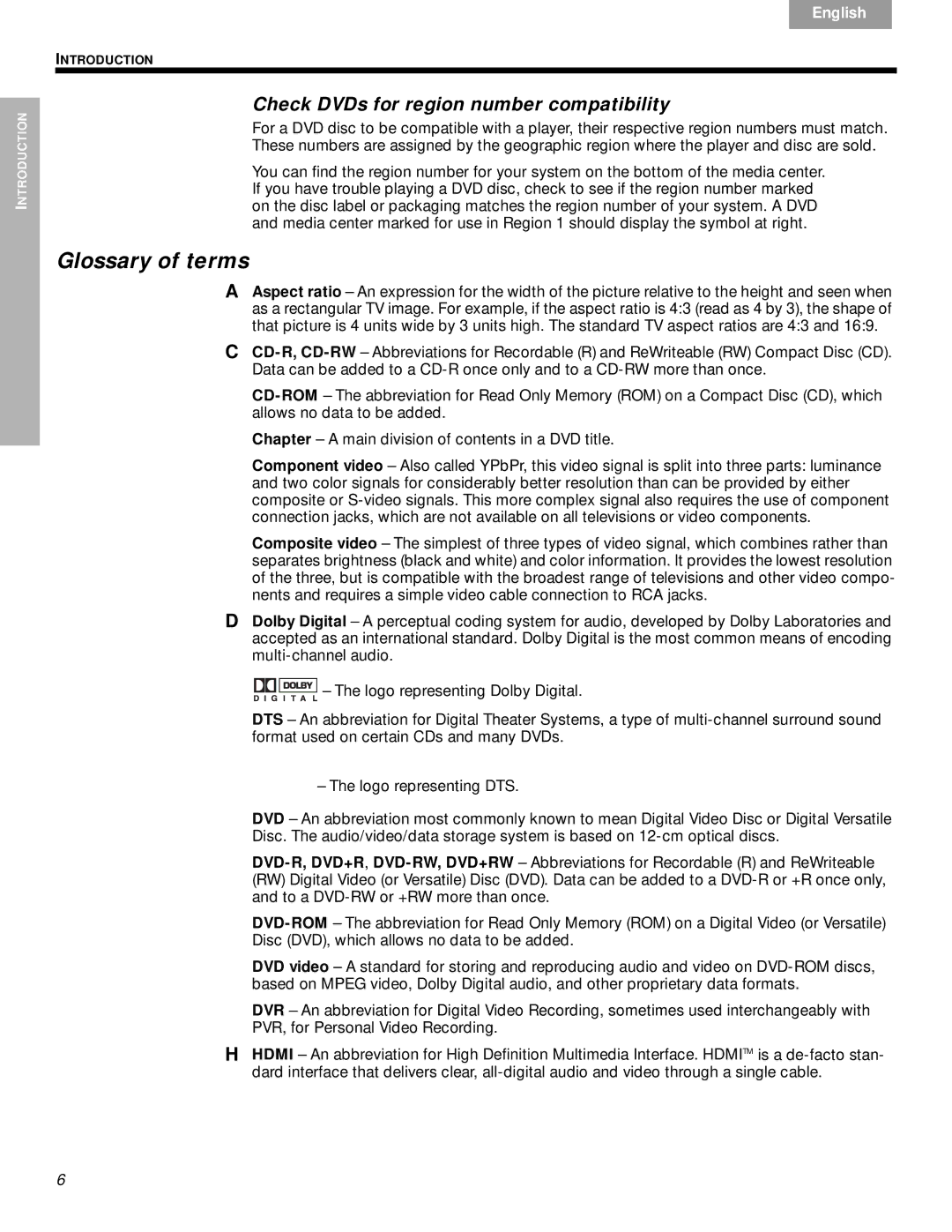
INTRODUCTION
Français | Español | English |
|
|
|
INTRODUCTION
Check DVDs for region number compatibility
For a DVD disc to be compatible with a player, their respective region numbers must match. These numbers are assigned by the geographic region where the player and disc are sold.
You can find the region number for your system on the bottom of the media center. If you have trouble playing a DVD disc, check to see if the region number marked on the disc label or packaging matches the region number of your system. A DVD and media center marked for use in Region 1 should display the symbol at right.
Glossary of terms
AAspect ratio – An expression for the width of the picture relative to the height and seen when as a rectangular TV image. For example, if the aspect ratio is 4:3 (read as 4 by 3), the shape of that picture is 4 units wide by 3 units high. The standard TV aspect ratios are 4:3 and 16:9.
C
Chapter – A main division of contents in a DVD title.
Component video – Also called YPbPr, this video signal is split into three parts: luminance and two color signals for considerably better resolution than can be provided by either composite or
Composite video – The simplest of three types of video signal, which combines rather than separates brightness (black and white) and color information. It provides the lowest resolution of the three, but is compatible with the broadest range of televisions and other video compo- nents and requires a simple video cable connection to RCA jacks.
DDolby Digital – A perceptual coding system for audio, developed by Dolby Laboratories and accepted as an international standard. Dolby Digital is the most common means of encoding
![]()
![]()
![]() – The logo representing Dolby Digital.
– The logo representing Dolby Digital.
DTS – An abbreviation for Digital Theater Systems, a type of
– The logo representing DTS.
DVD – An abbreviation most commonly known to mean Digital Video Disc or Digital Versatile Disc. The audio/video/data storage system is based on
DVD video – A standard for storing and reproducing audio and video on
DVR – An abbreviation for Digital Video Recording, sometimes used interchangeably with
PVR, for Personal Video Recording.
HHDMI – An abbreviation for High Definition Multimedia Interface. HDMITM is a
6
